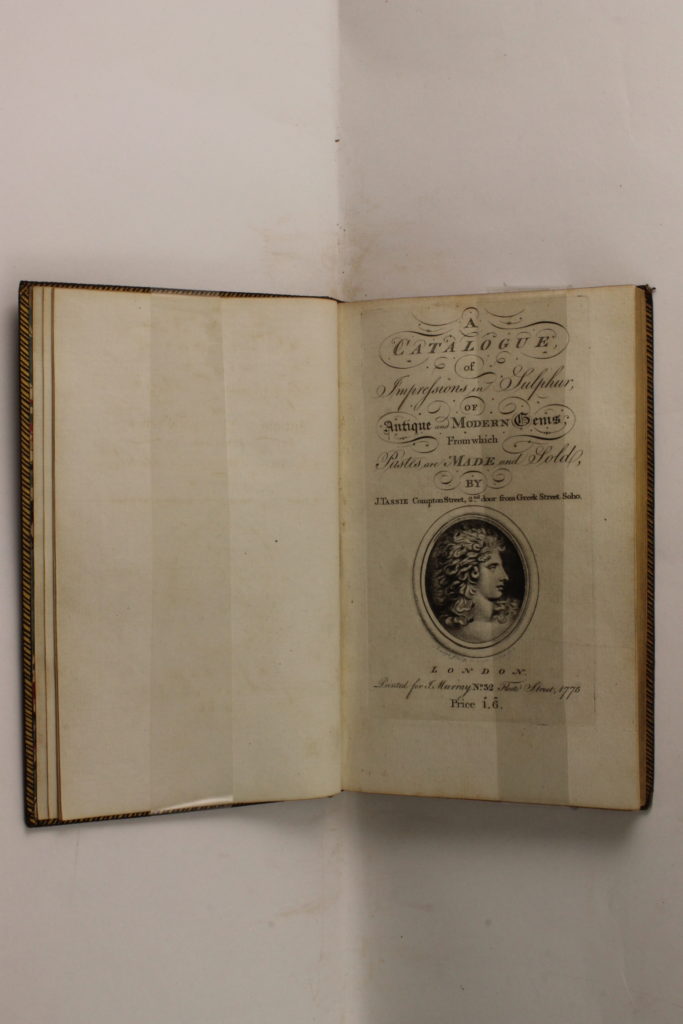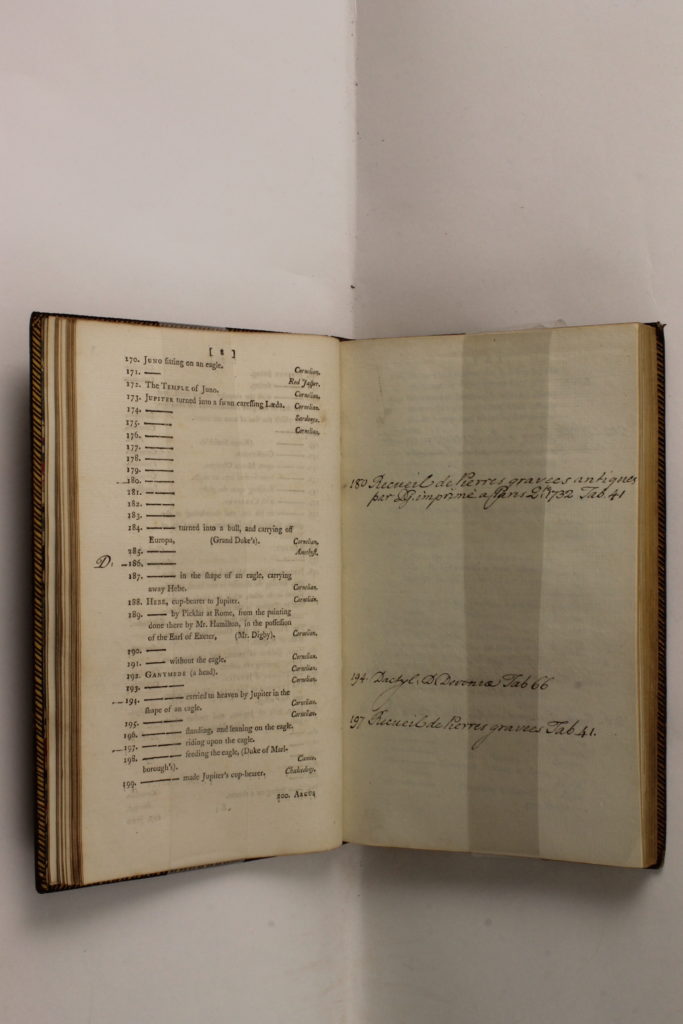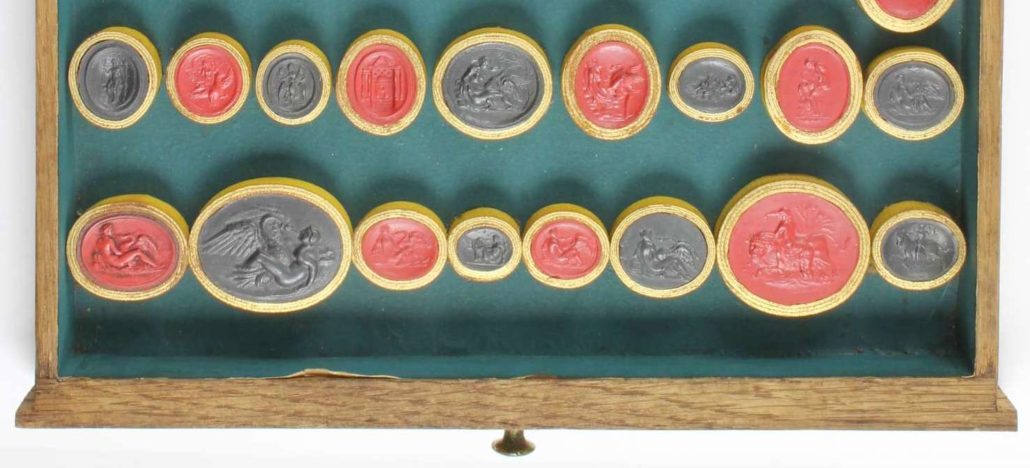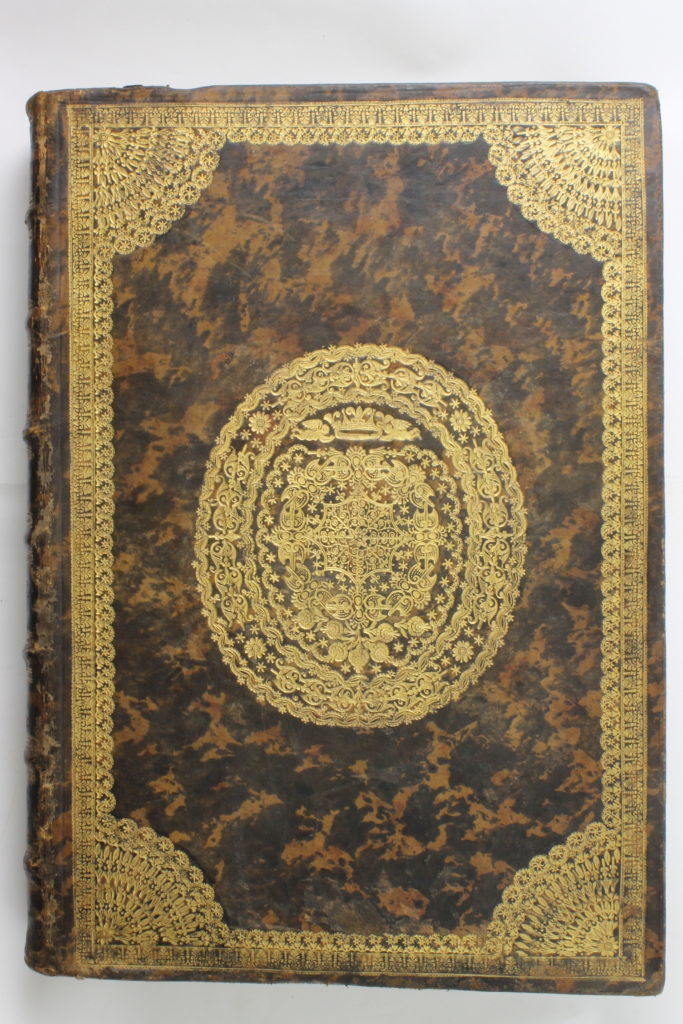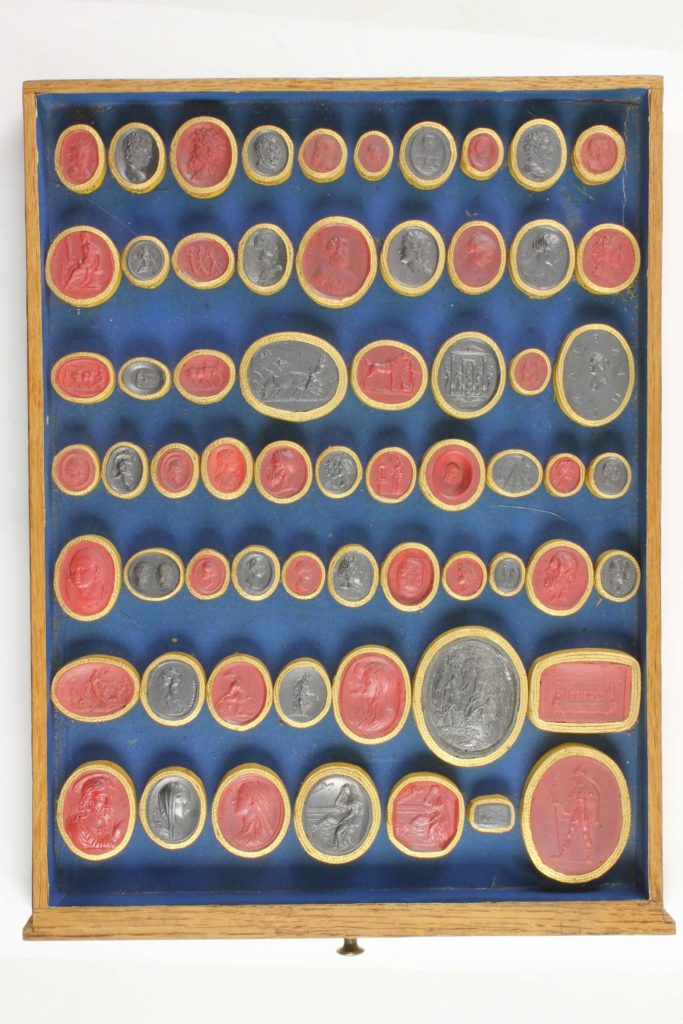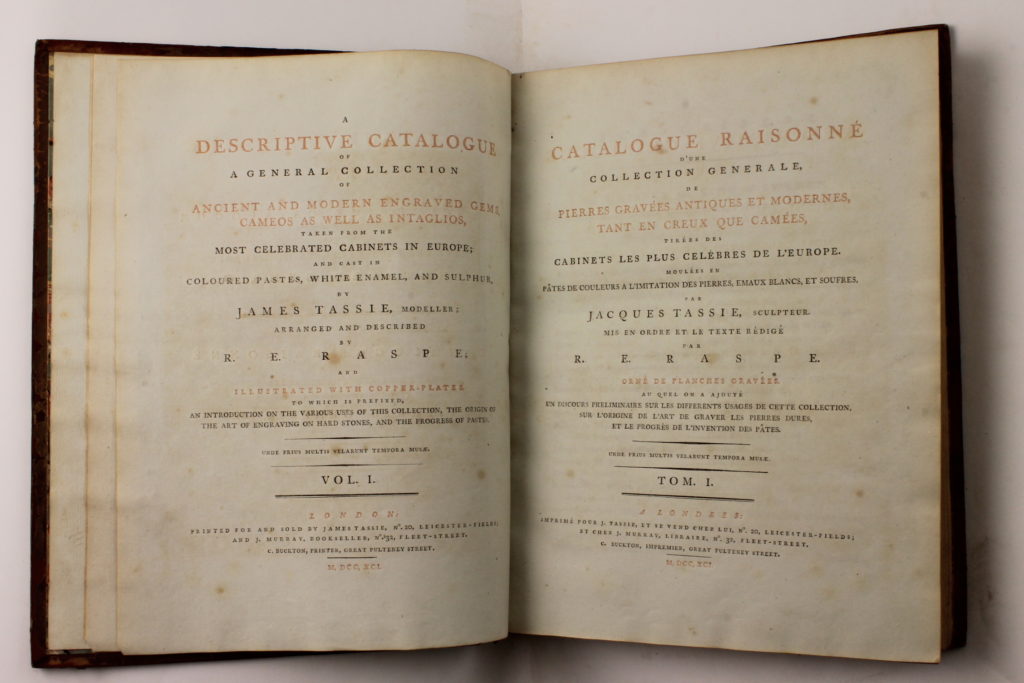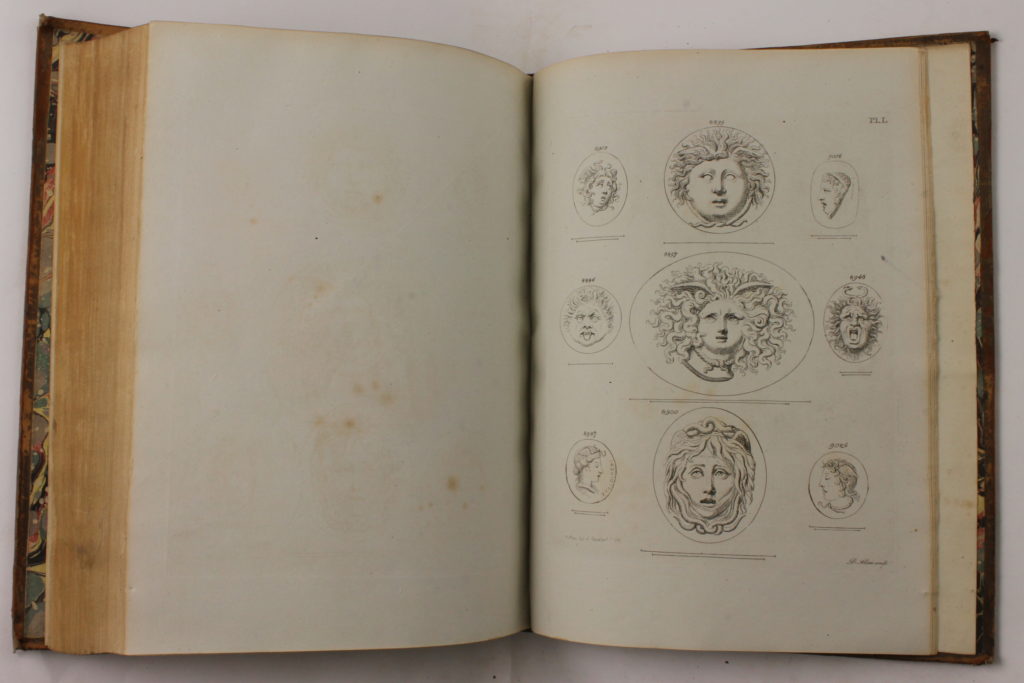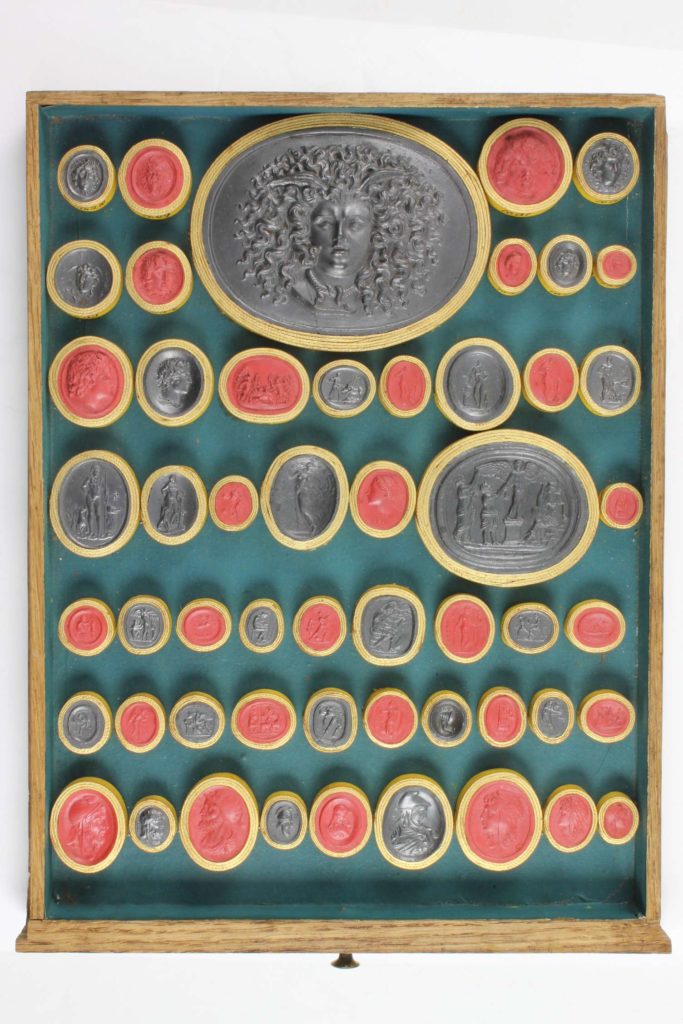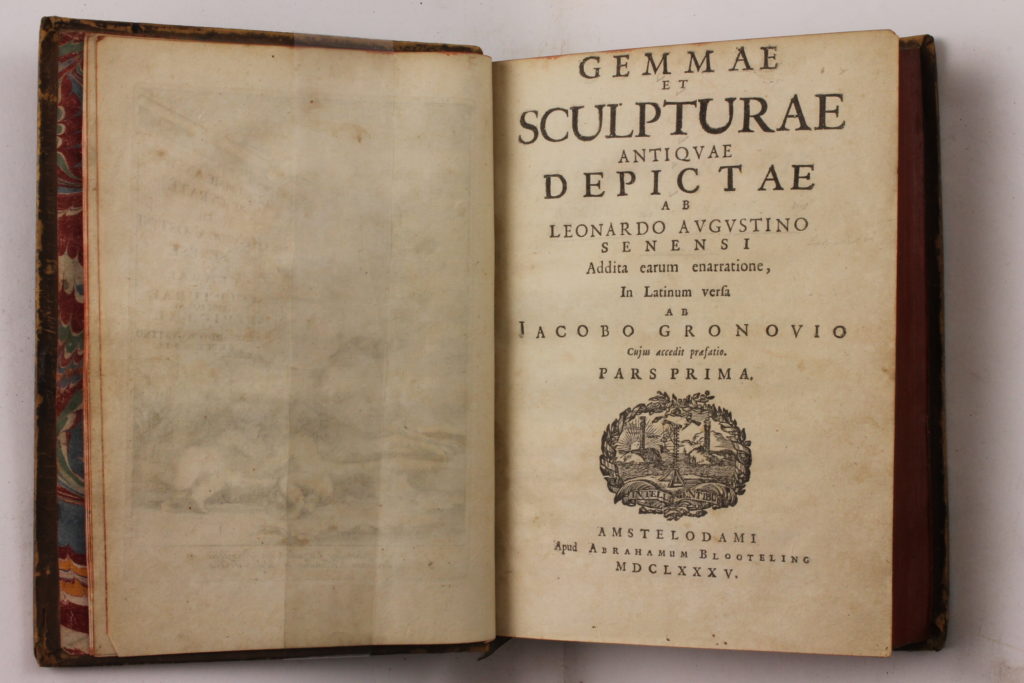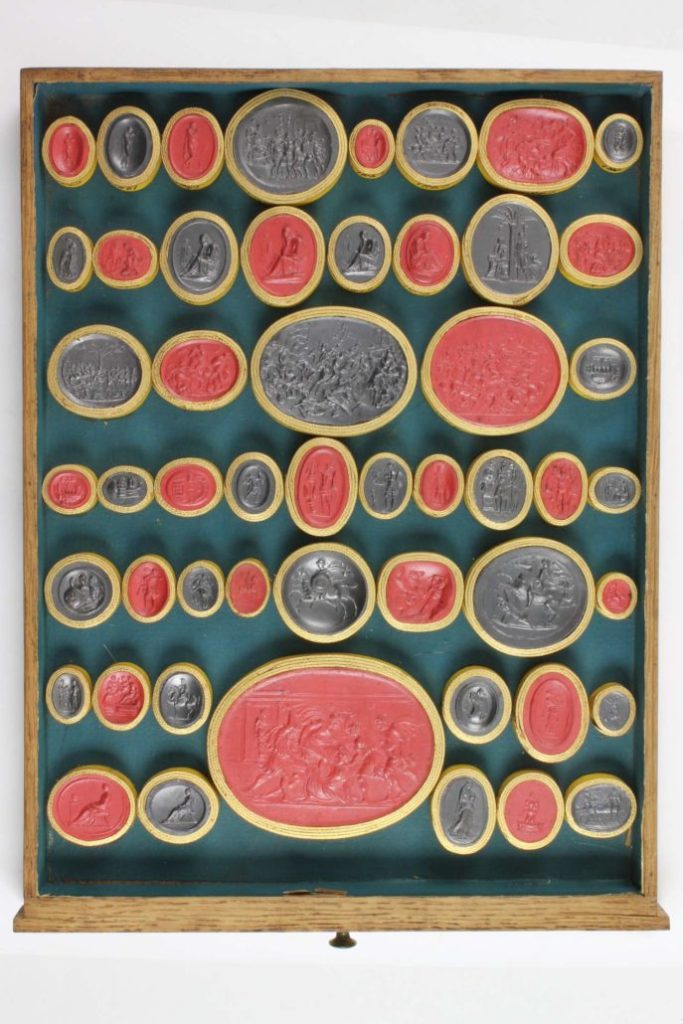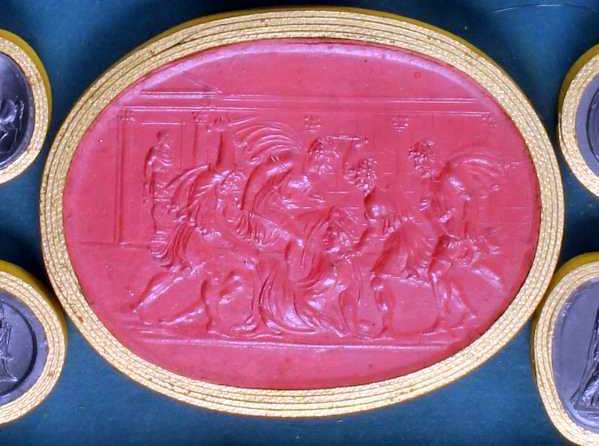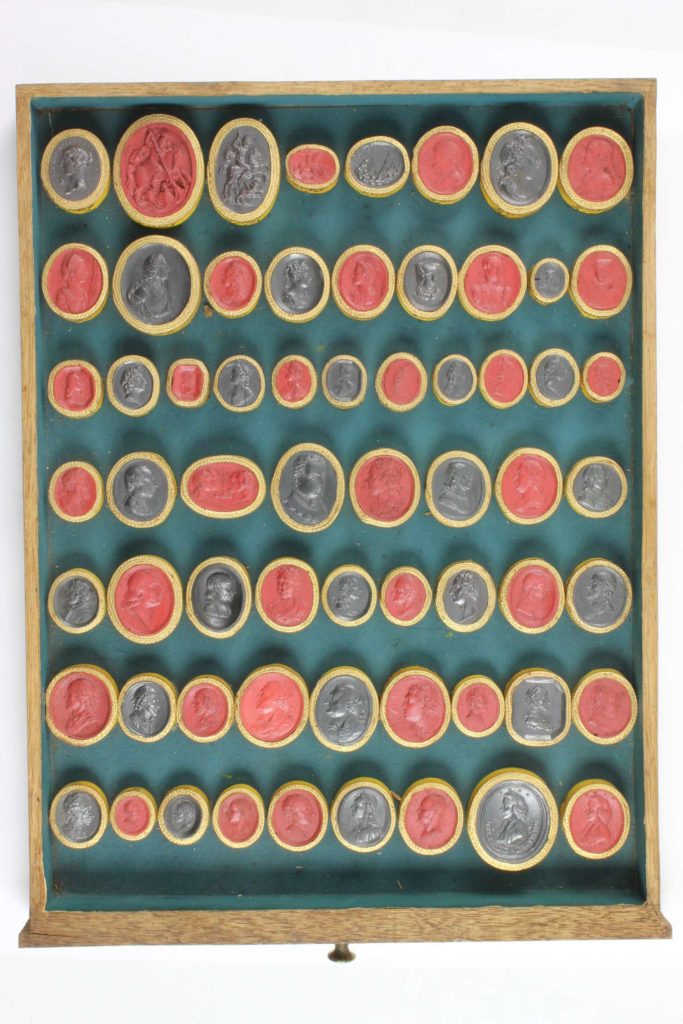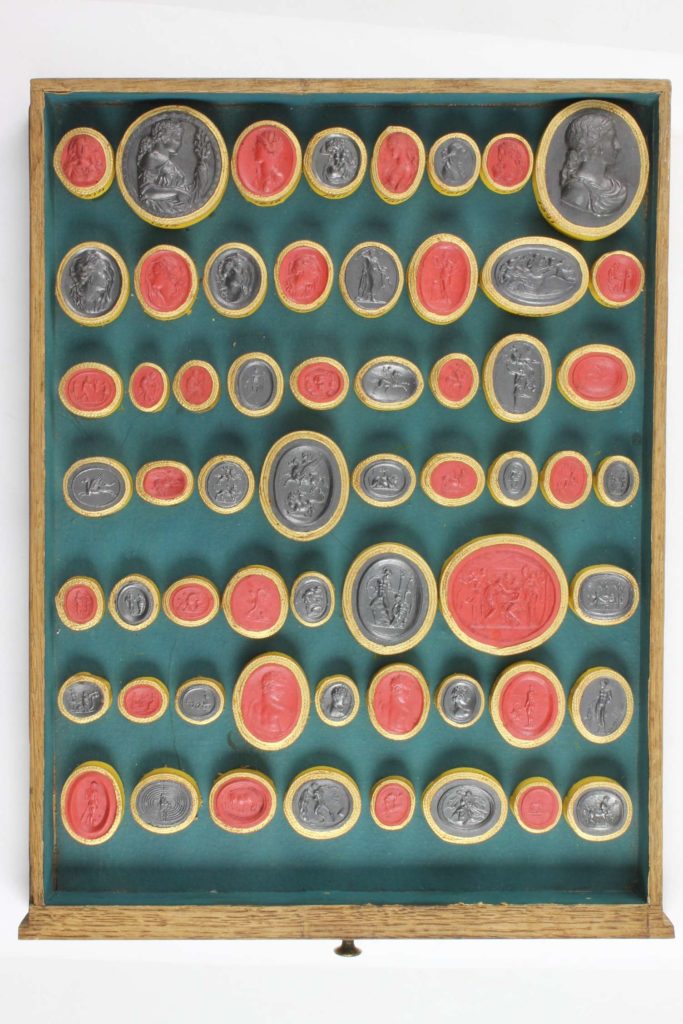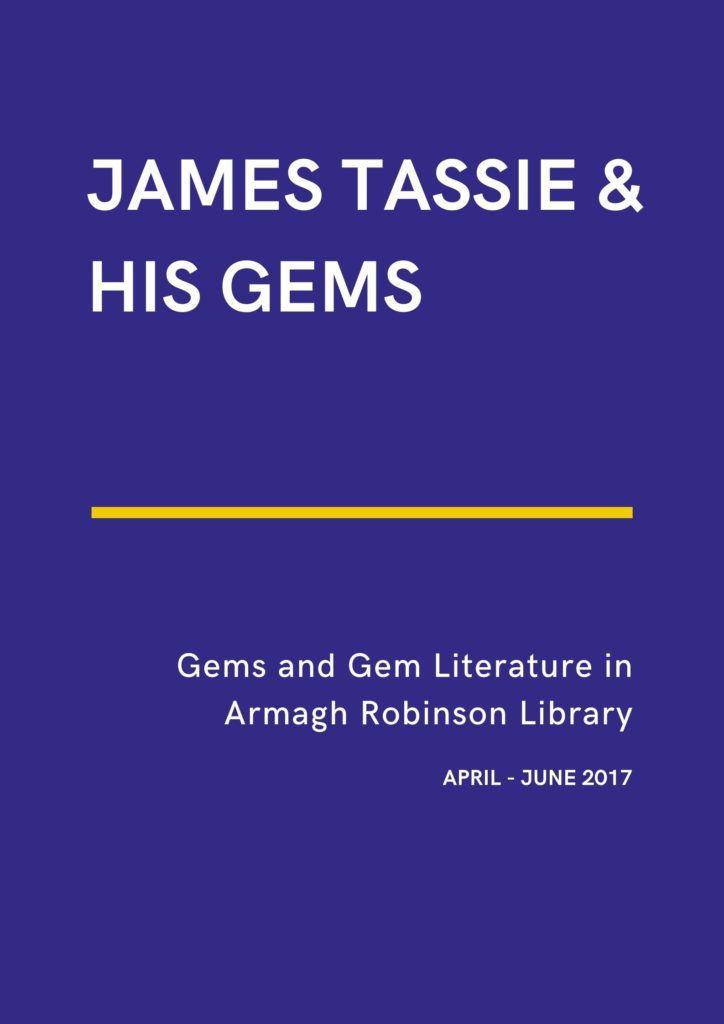
The founder of the Library, Archbishop Richard Robinson, was a keen collector of Tassie’s gem impressions. He left his collection of almost 4,000 gems, including 3100 Tassie gems, to the Library. This collection is the focus of this exhibition.
Gems
Carved with official or personal symbols, gemstones were also valued as works of art, because the carvings required great skill and attention to detail.
Gemstone Cabinets
During the Greek Empire, engraved gemstones became collectors’ items. Collectors would display them in gem cabinets, called daktyliothecae. In the 15th to 17th centuries, collectors of Greek and Roman art revived the interest in gems and new collections were created.
James Tassie, engraver and modeller
James Tassie (1735–1799), the Scottish sculptor and gem engraver, developed a way to make impressions of gemstones in plaster and coloured paste. This process made it possible for less wealthy collectors to collect gems. He became most famous for his portrait medallions and gemstone reproductions. These were highly sought after by 18th century collectors, and were used for display.
Tassie received commissions to duplicate many famous gems, both ancient and modern. At the time of his death, approximately 20,000 Tassie pieces were in existence. The total number of impressions which he made is considered to be much higher. Tassie seems to have been a perfectionist, destroying the impressions that did not live up to his high standards!
A Catalogue of Impressions in Sulphur of Antique and Modern Gems From Which Pastes are Made and Sold, by J. Tassie Compton Street James Tassie 1775 P0019629
The gems in this Tassie catalogue correspond with 3,106 of the gems in the Library’s collection.
Tassie suggests that when they use the catalogue:
The Antiquarian and the Scholar may find the gratification of their taste – the Student an assistance to his memory.
Gem numbers 173 through to 183 refer to the story of Leda and the Swan.
Gem Drawer C James Tassie
In the bottom two rows of this drawer the gems depict the story of Leda and the Swan.
This is a story in Greek mythology where the god of sky and thunder, Zeus, turns himself into a swan and seduces Leda.
In some versions of the story, Leda lays two eggs from which the children of Zeus, and also the children of her husband, Tyndareus, hatch.
The Tassie catalogue refers to Zeus by the name of his Latin equivalent, Jupiter. In this drawer, there are more depictions of Jupiter as the king of the gods of the ancient Roman religion.
Le Gemme Antiche Dactyliotheca Anton Maria Zanetti 1750 P001148040
This publication contains 80 plates with engravings of the Greco-Roman and modern gems collected by the Venetian Count Anton Maria Zanetti.
When it was published, many thought it was an extravagant sale catalogue! Zanetti received many offers for the gems. He refused to sell any until the Duke of Marlborough offered a high price for four of his prize gems.
Gem Drawer: WW James Tassie
The biblical gems in this drawer stand out from the other mostly classical gems.
The biblical gems show Jesus preaching, the Last Supper, Mary Magdalene at the empty tomb, the head of the Madonna, Jonah in the whale, and Satan disguised as a pilgrim.
There are also gems with images of pyramids, temples and animals.
A Descriptive Catalogue of a General Collection of Ancient and Modern Engraved Gems, Cameos and Intaglios, Taken from the Most Celebrated Cabinets in Europe; and Cast in Coloured Pastes, White Enamel, and Sulphur. Volume 1 and 2 James Tassie ; Erich Raspe 1791 P001392944
German librarian, scientist and writer Rudolf Erich Raspe, who is best known for his book, The Surprising Adventures of Baron Munchausen, published this bi-lingual catalogue in 1791. It classifies and describes Tassie’s collection of then 15,800 pastes and casts of gems.
Complete sets of the paste and gem collection are rare: other examples are in Edinburgh, in the Victoria and Albert Museum in London, the Baltimore Museum of Art, and in the Hermitage in St. Petersburg. The latter is the collection which Catherine the Great ordered in 1783.
The second volume of Raspe’s catalogue shows images of many of the gems in the drawer on display.
Gem Drawer DD James Tassie
Medusa, a figure in Greek mythology, was one of the three Gorgon sisters: three powerful, winged demons. She is recognisable by her hideous face and snakes for hair.
The Roman poet Ovid wrote that Medusa’s appearance had been changed by the goddess Athena as a punishment for having been raped in her temple by Poseidon.
In addition, it was believed that anyone who looked on Medusa’s face would turn to stone.
This drawer shows many striking depictions of Medusa.
Gemmae Et Sculpturae Antiquae Depictae Ab Leonardo Augustino Senensi Addita Earum Enarratione, In Latinum Versa Ab Jacobo Gronovio Cujus Accedit Praefatio Leonardo Augustini 1685 P001102202
The work on display is the Latin translation of Gemme antiche figurate, a work by Leonardo Agostini on antique engraved gems, which was published in two volumes in 1657 and 1669.
Augustini was a collector for Cardinal Francesco Barberini, as well as a superintendent of antiquities to Pope Alexander VII.
The first volume contains engravings of the gem collection which Agostini had assembled for Cardinal Barberini. The second volume contains cameos and other discoveries from the ‘august ruins of great Rome’. The gems are grouped by themes.
On display is the image of a gem showing Julius Caesar, dictator of the Roman Republic.
Gem Drawer HH James Tassie
This gem drawer refers to several events from Roman history.
First, there is the depiction of the death of Julius Caesar. Several conspirators stabbed Caesar to death in an attempt to overthrow his dictatorship.
Secondly, there are images of Seneca the Younger who was a Roman philosopher, statesman and playwright. He was also the tutor and adviser to Emperor Nero.
Seneca was alleged to have been part of a plot to murder Nero, who ordered Seneca to kill himself. The gem shows the suicide of Seneca in a bath.
Gem Drawer XX James Tassie
This drawer contains an assortment of themed gems.
In the top row is a gem showing a ship inscribed ‘S.S Doddington’, a ship which belonged to the East India Company. On her third voyage to India, the ship carried a large amount of gold for Major-General Robert Clive, known as ‘Clive of India’. The gold never reached its destination, as the ship was wrecked in July 1755.
Another gem shows St. George fighting the Dragon to save a princess from death.
Gems of other famous historical figures depict Oliver Cromwell, Queen Charlotte, Louis XIV and Sir Isaac Newton.
Gem Drawer BB James Tassie
This drawer contains many mythological creatures.
Pegasus, a winged stallion, is one of the best known creatures in Greek mythology. He is usually shown as pure white and often as a symbol of wisdom.
At the top of the drawer there are striking images of Cleopatra, including her death from the bite of an asp.
Towards the bottom of the drawer there is a depiction of the Minotaur, a creature with the head of a bull and the body of a human, that lived at the centre of a labyrinth.
There are also examples of the Sphinx, a creature with the head of a human, the body of a lion and the wings of a bird. In Greek tradition the Sphinx asks travellers a riddle if they wish to enter the city of Thebes, and if they cannot answer it, they will be eaten. In the tragedy Oedipus the main character answers correctly and causes the Sphinx’s death.

